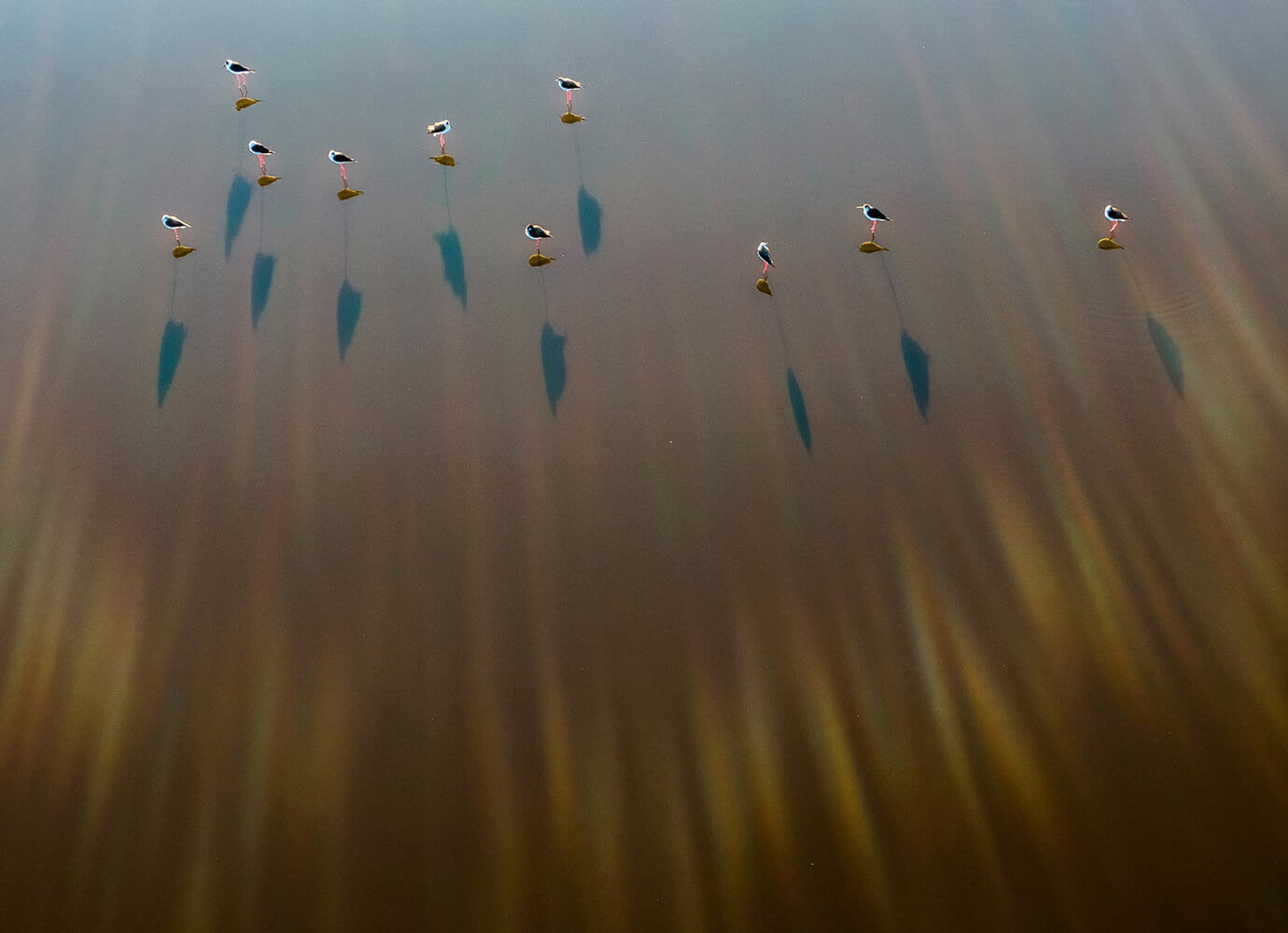“ANIMAL
KINGDOM”
ANNOUNCING THE WINNERS
We’re delighted to present the results of our November 2020 competition judged by one-of-a-kind animal photographer Tim Flach.
For this competition we asked you to explore animal life – exotic or domestic, wild or tamed, out in nature or sharing our urban spaces. Tim Flach has made a career in heightening our connection to animals through portraiture, and in highlighting the magic and humor of the animal kingdom, and there is something of those themes here – we see animals as companions, as inspirers of awe, and as things of abstract beauty. But predominantly the selection speaks to the pressure we exhibit on the natural world – through poaching, unsustainable consumption, and the widespread destruction of the natural habitats these other species call their homes. It is a sad picture of the world we live in today.
And yet even in the darkest of images there are glimmers of beauty and hope – in the scenes themselves and in the very idea of these twenty talented photographers working to raise these important issues, sharing these stories with an audience in the most creative and considered of ways. We invite you to dive in and explore twenty examples of stunning contemporary photography that capture the majesty of the creatures that share our planet Earth.
“It was a real privilege to judge the Animal Kingdom category. I believe that photography can play such an important role in connecting us to nature, especially at a time when it has never been more important for us to care about our relationship to the natural world. I was looking for images that both intrigued and surprised me, and in many cases created powerful emotional engagement. There was a wide range of work submitted to this category, which made it even harder to distil my list of shortlisted candidates.” – Tim Flach
Congratulations to the selected photographers, and thank you to everyone else who submitted. Enjoy! You can join the discussion on Facebook and Instagram.
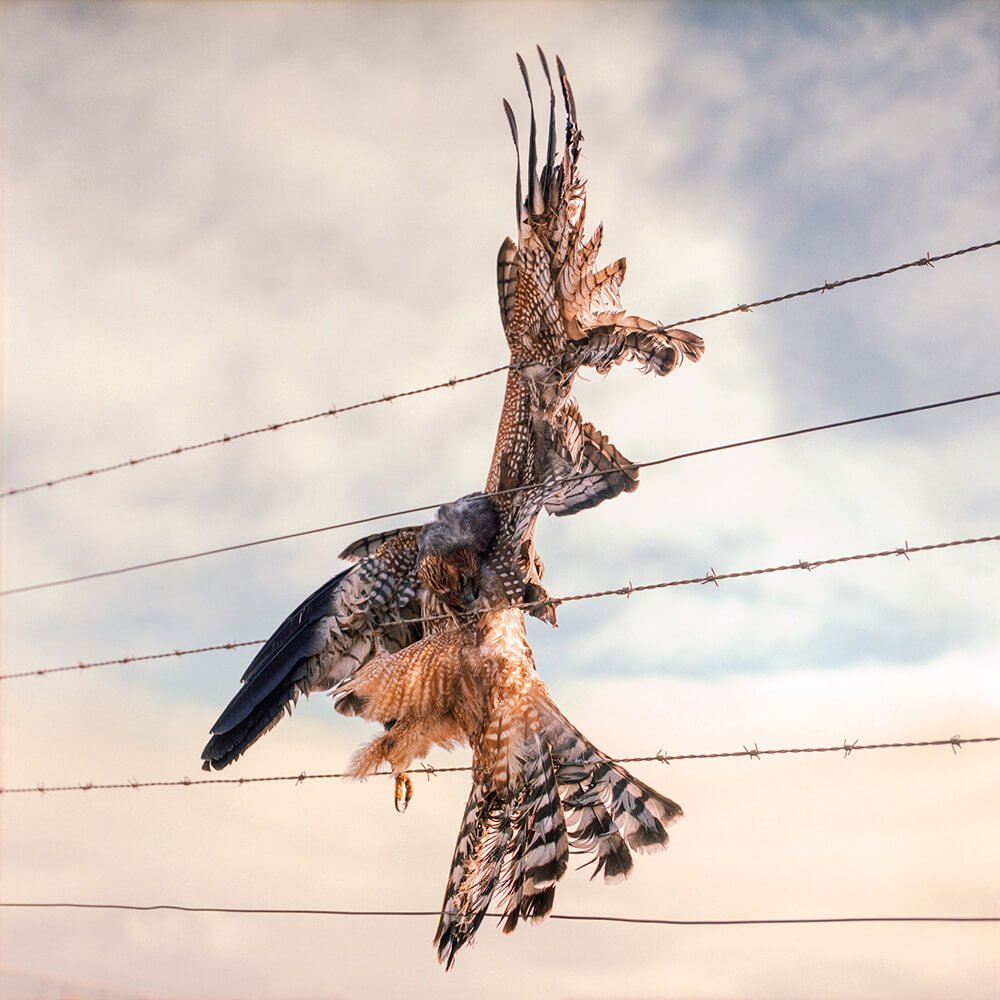
“This image for me keeps resonating after seeing it. The sense of some beautiful bird left crucified on the barb wire, its feathers still fresh. While the bird may already be dead there is a feeling of torture or inability to escape the clutch of human intrusion.” – Tim Flach
Photographer statement – Spotted harrier or smoke hawk caught up in a fence from the series To All the Bobbies Out There. Besides being one of the major causes for global warming, animal agriculture causes a myriad of issues which all lead to biodiversity loss. More than 80% of all farmland is used for livestock but it produces just 18% of food calories and 37% of protein. Mismanaged land, soil depletion and fencing increase migration and habitat issues for wildlife. Such transformations can eliminate 30-90% of biodiversity, depending on the local ecosystem and intensity of destruction.
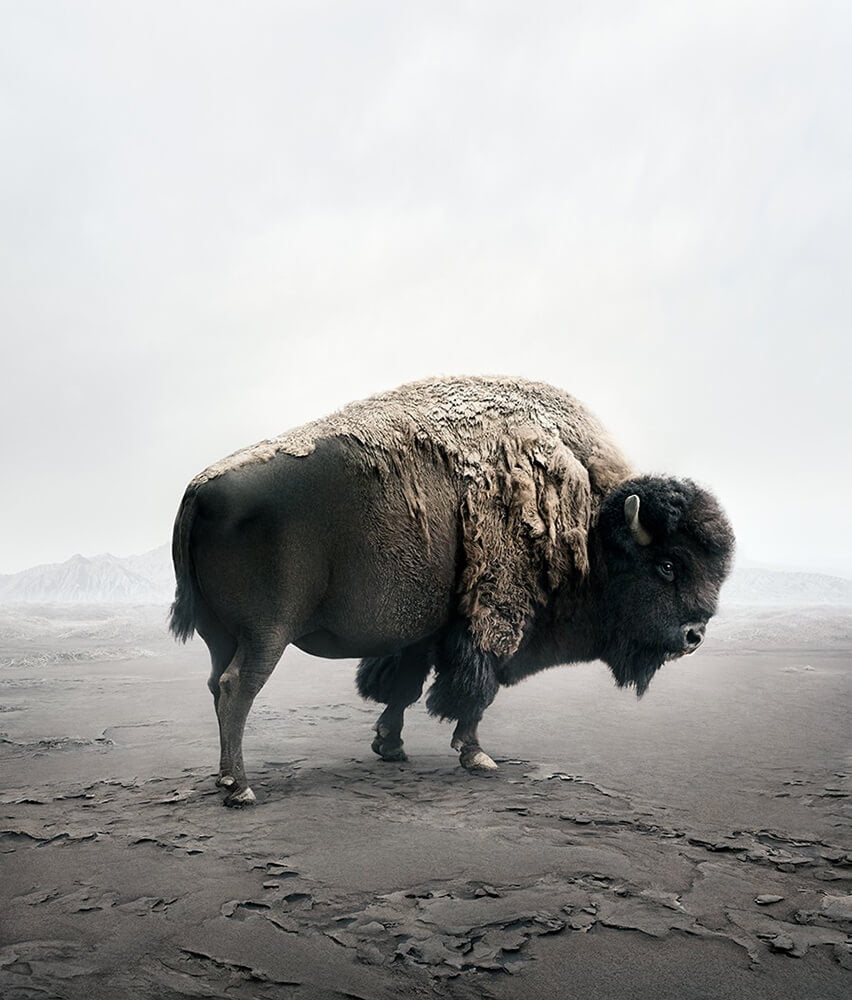
“For me this image evokes something lost. There is something surreal and tranquil about this image that allows me space to reflect on the subject. For me the single beast separated from the herd seems to represent the rapid decline in numbers from millions to simply a matter of hundreds that remain in America today.” – Tim Flach
Photographer statement – “Be Here Bison”. In this series, I create animal montages as an expression of self-therapy. As an urbanite, functioning day-to-day in a fast-paced, built environment can be emotionally unsettling. I reground myself in the sense of calm issued by these animals. These creatures reinstate a presence, a tranquility, and a grander perspective. The works are an amalgam of many photographs from different locations around the world, put together seamlessly in post-production. Their minimal aesthetic is metaphorical of striving for simplicity. Rather than ruminating on the past, or hypothesizing the future, I invite a meditative state, encouraging the viewer to stay still and find happiness in the moment.
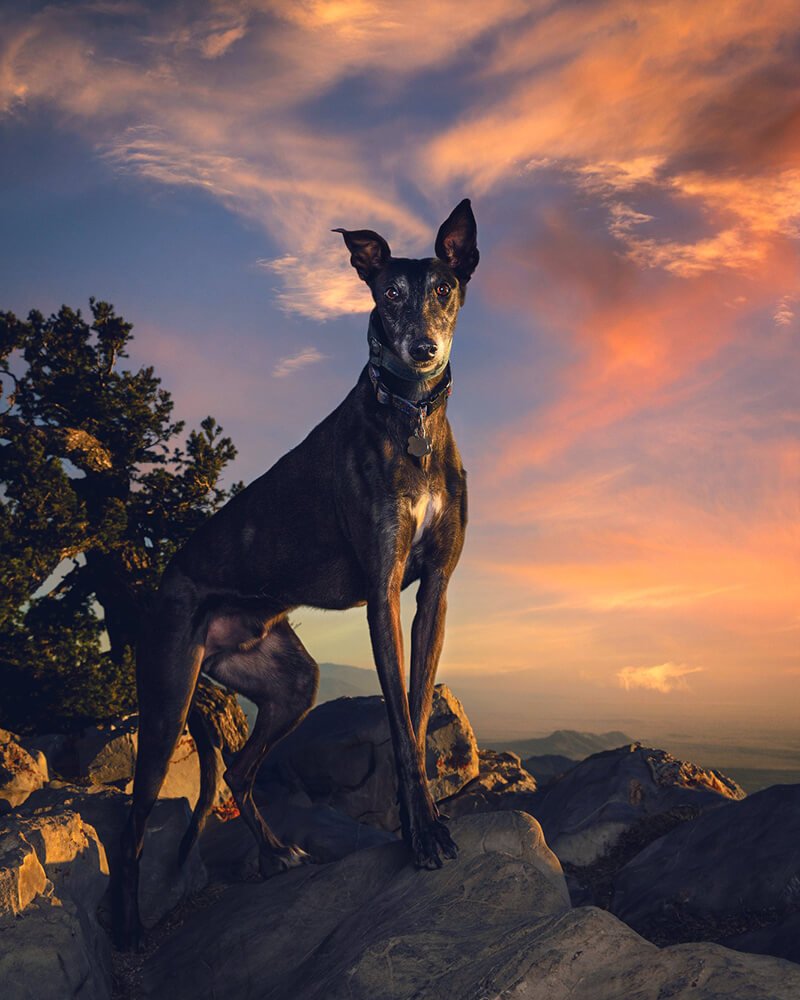
“Shot against a dramatic sunset, perched atop these rocks with a vast natural landscape extending behind him, there is a stately beauty to the way Travis photographs the dog in this image. He seems powerful, dominant and free. The reality is somewhat different we learn from Travis’s statement – Spanish Galgos dogs such as this one are bred to hunt hare and then abandoned or killed at the end of a short hunting season. It is a sad, cruel reality that Travis effectively protests, giving some respect back to this animal as well as highlighting his personality in his alert expression and cocked ear.” – Life Framer
Photographer statement – I use my photography to be a voice for the hunting dogs of Spain. It is a horrible fate to be born a Galgo in Spain, a very short brutal life of abuse and torture. I use my images to help change the perception of these dogs that are mass bred to hunt hare then abandoned or killed at the end of a short hunting season. An estimated 100,000 Galgos are abandoned or killed each year in Spain.
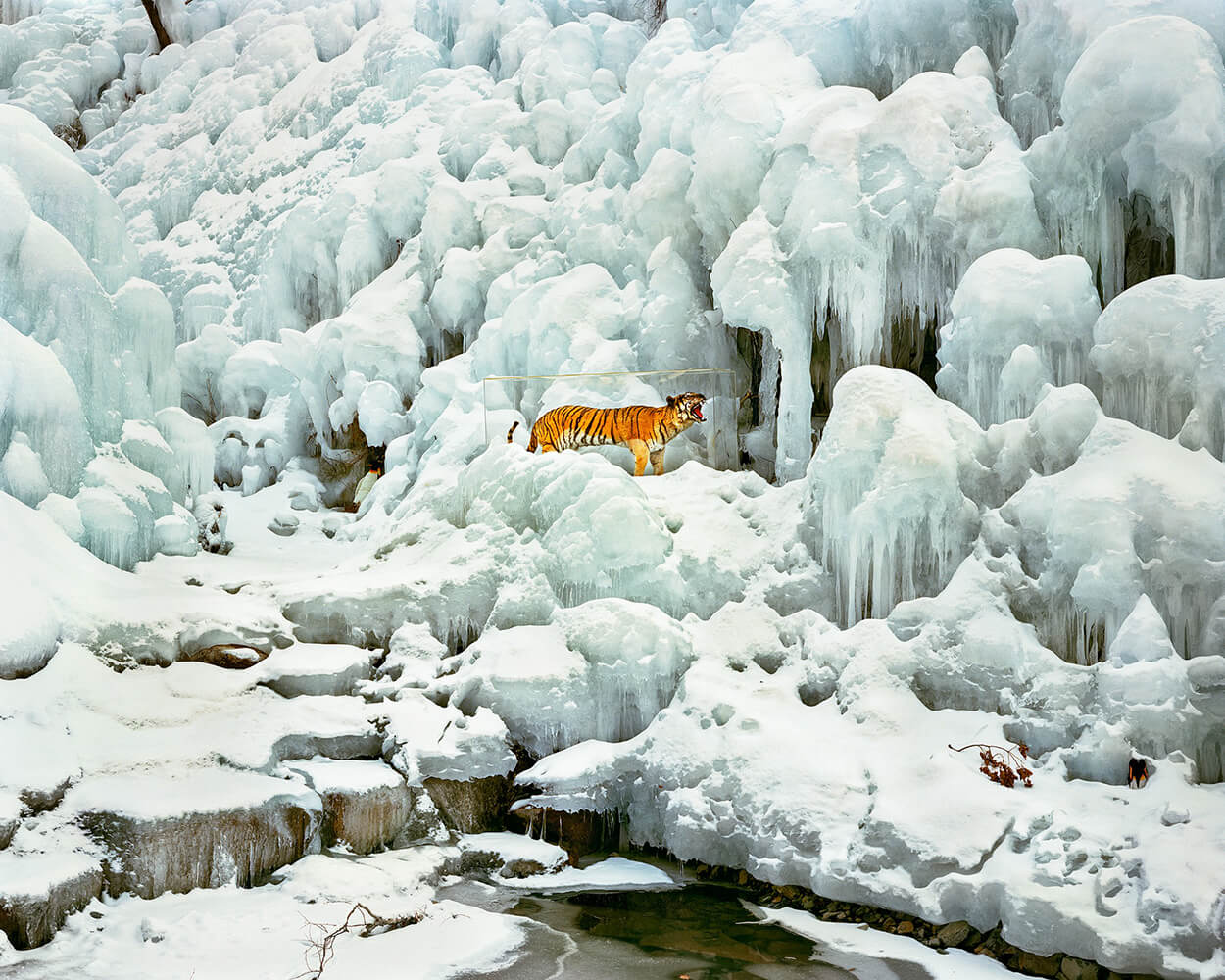
“This image is immediately arresting – the bright orange and black stripes of this Bengal tiger center-frame prominent against the white sheets of ice that surround it. The glass box that encases it then emerges, along with the other creates center-left and bottom right – could they be penguins? – and we realise that this is an artificial scene. Seunggu describes the context – a winter festival in South Korea where water is sprayed to freeze the trees, and this stuffed museum tiger stands as the main attraction – a mise-en-scène for tourists to enjoy, based on an old local story. Photographed in this context it describes a gloomy reality, this rare and endangered animal pulled out of its natural habitat and confined to a glass box, symbolic perhaps of the way we humans have pushed it to the edge of extinction through poaching and destruction of its forests and grasslands. It roars in rage and helplessness, preserved only for our enjoyment.” – Life Framer
Photographer statement – “Bengal Tiger”. There is a winter festival held in the mountains near the city. At night for about a month, water is sprayed to freeze the trees, and then the stuffed tiger is moved into the arcane box that was in the museum. It is rumored that a tiger was caught in the mountain 80 years ago. However, I found out that they were imported tigers from a Chinese zoo. The tiger is a symbol of Korea and it became a photo zone for people.
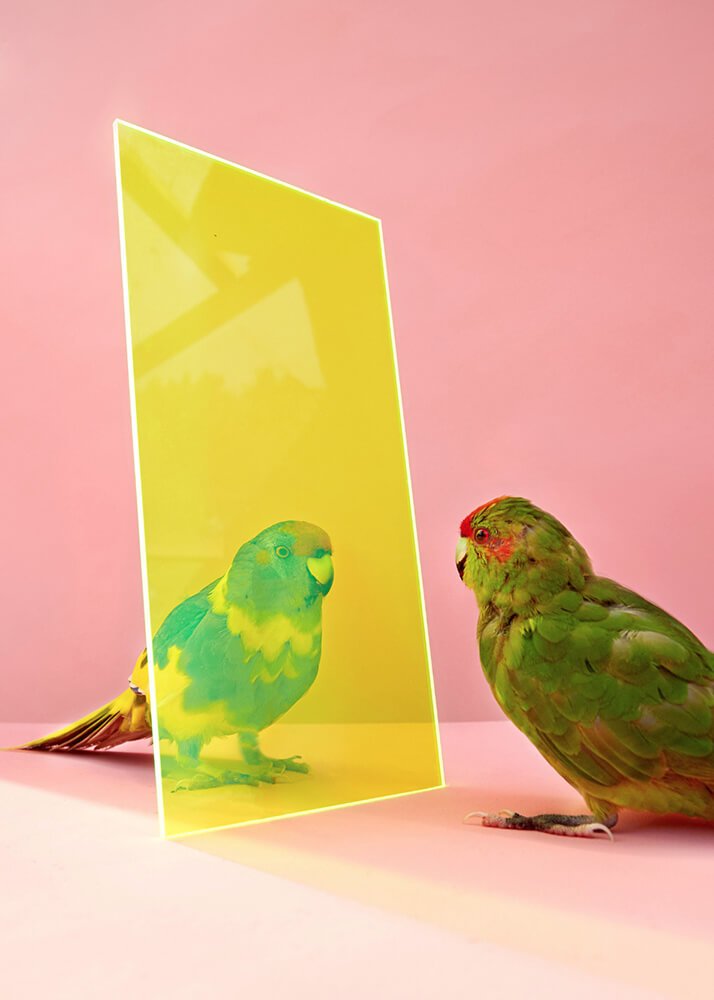
“This is a wonderfully creative shot, full of color and character. These two budgies – father and son we are told – survey each other through the fluorescent yellow Perspex, at first mistakable for a single bird and its reflection. With a setting and lighting reminiscent of a product photo shot, Kristin extracts these birds from any sort of natural context (except perhaps for the vague hint of trees and sky, reflected in the plastic and far out of reach). It acts to bring focus to them – their beautiful feathering and how they interact with one another – while highlighting the strange idea of pet culture, confining wildlife, one could argue, for our human pleasure. There is in this sense a sadness to the image, despite the feast of bright colors.” – Life Framer
Photographer statement – From the series I Don’t Want to be in Your Feathers. This image still moves me a lot. It shows father and son. On the left the rebellious little son, but the strict father on the right always keeps an eye on him. Both seem to be looking at each other as if in a mirror, seeing the likeness in front of them.
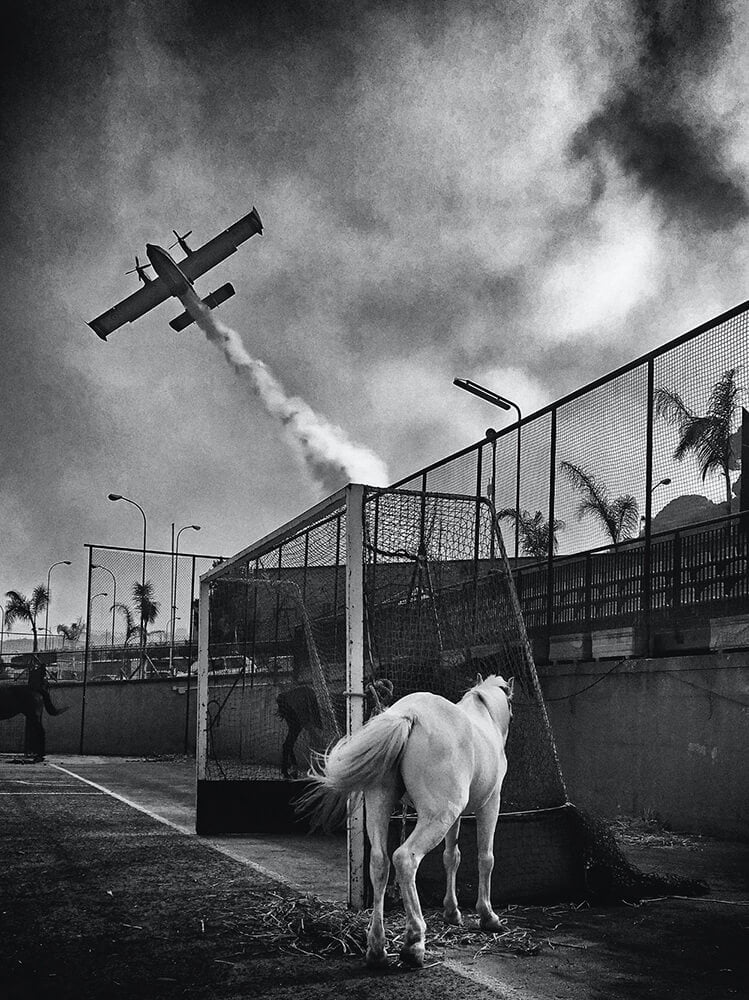
“There is something magical about images that freeze an ephemeral moment of drama, the ‘decisive moment’ as Cartier-Bresson famously coined. Simona captures a firefighting aircraft arching across a moody, sooty sky, tacking a fire below while these horses are penned in for safety. The high contrast black and white emphasizes the tension of the scene, and although the horse may not exactly be the subject of the frame, it nonetheless speaks to our relationship with wild animals, and their place in the urban world.” – Life Framer
Photographer statement – Horse & Canadair, Sicily, Italy, 2017. Horse in a soccer field after being evacuated due to a huge fire.
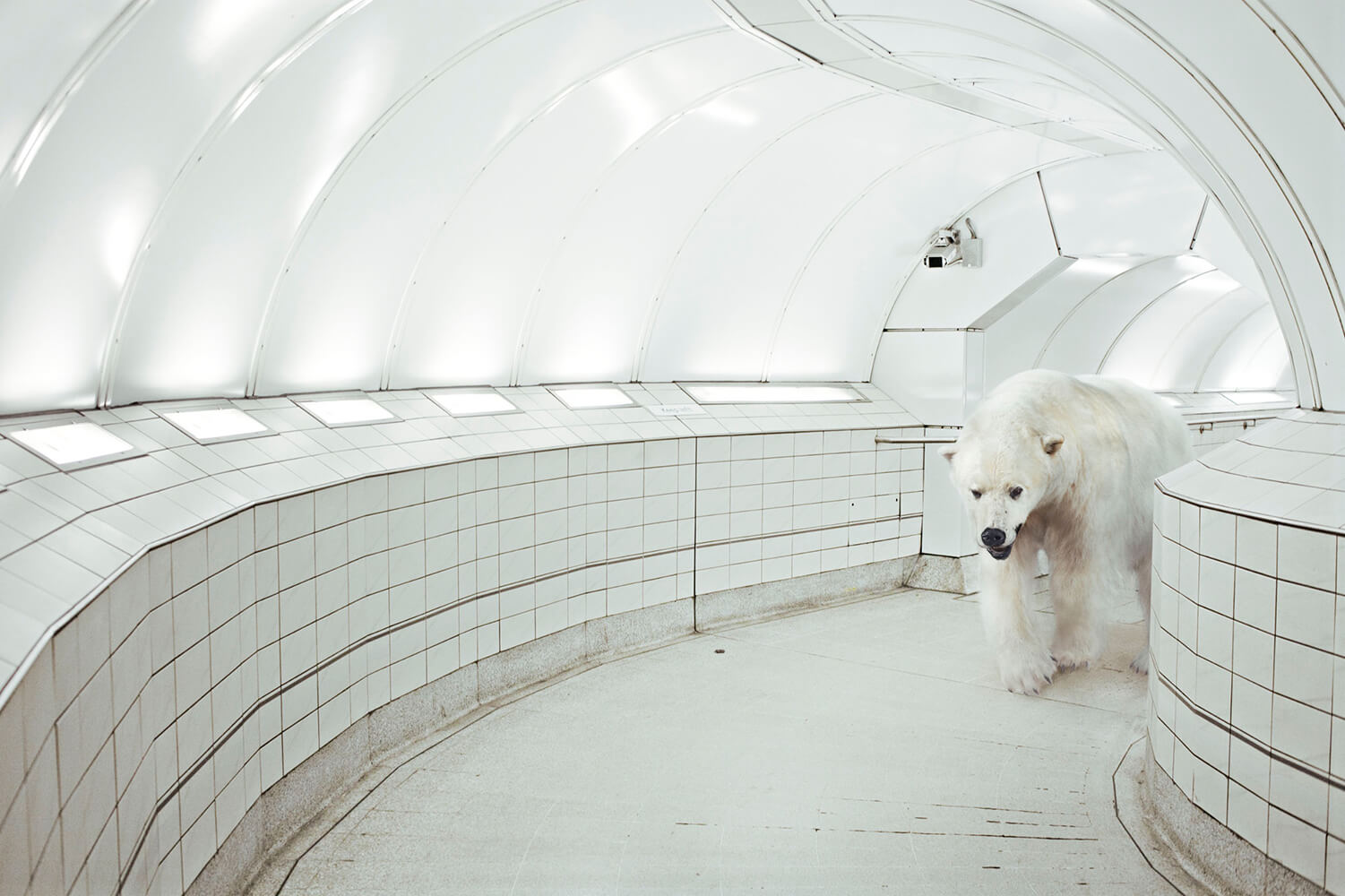
“While clearly staged, or perhaps digitally constructed, this is a remarkable image that speaks to our relentless human encroachment of the natural world. The colors may mimic those of this polar bear’s natural environment, but it’s a million miles away – artificial, hollow and sterile. It perhaps could be seen as the backstage of a zoo, but is better read as the manmade world more broadly. Polar bears are used as a poster child for the impacts of climate change, and this image takes that symbolism to its extreme. The CCTV camera is a powerful touch – the idea of us watching on passively is apt.” – Life Framer
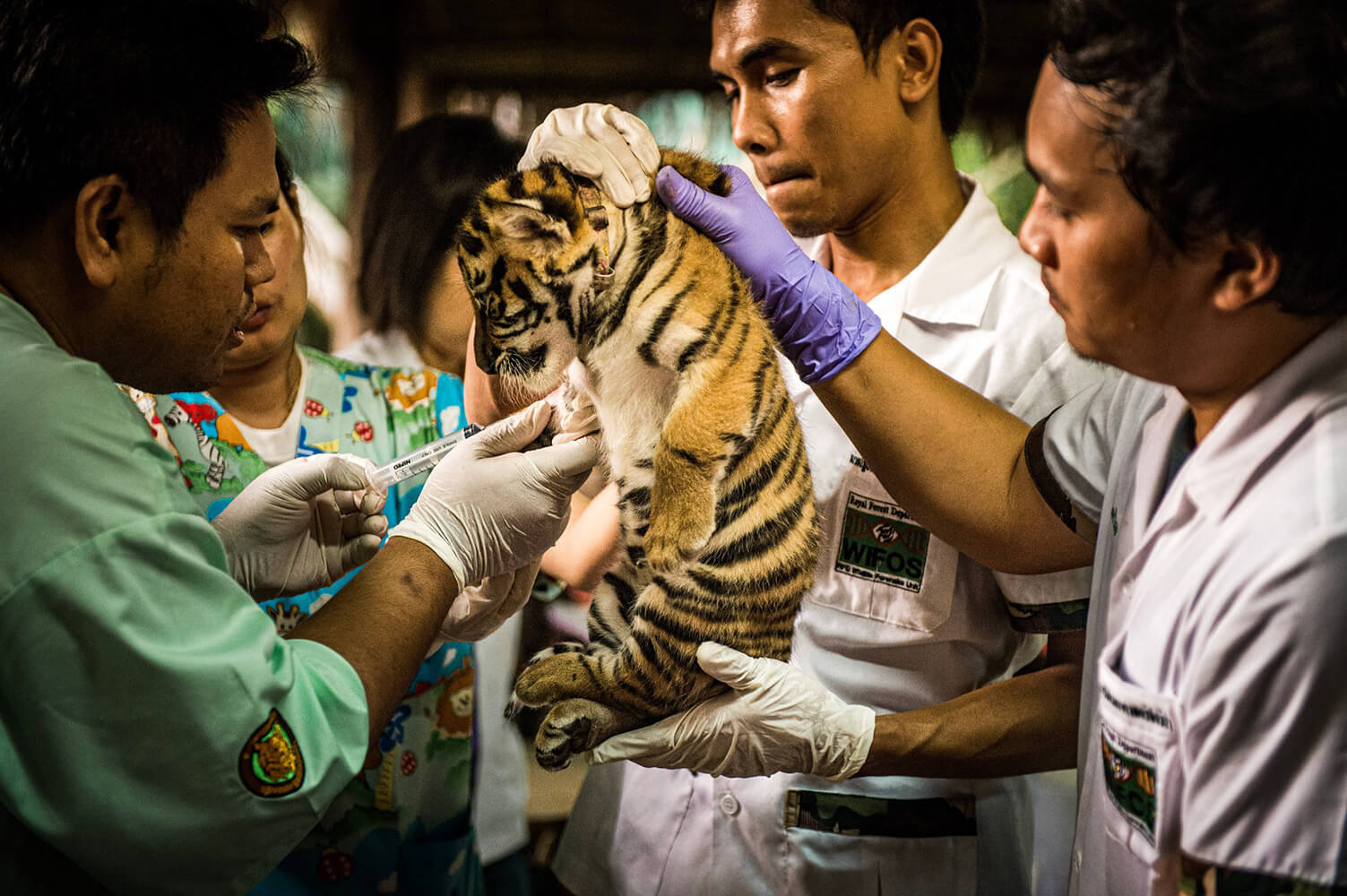
“A fantastic documentary image showing a veterinary team testing a tiger cub, caught in a failed attempt by smugglers to move it and 15 others across the border from Thailand to Laos. It describes a tension between those who attempt to profit from wild animals like these, and those that battle against it. As this team crowds around the cub, nursing it with care, the scene raises a host of moral, environmental and economic questions.” – Life Framer
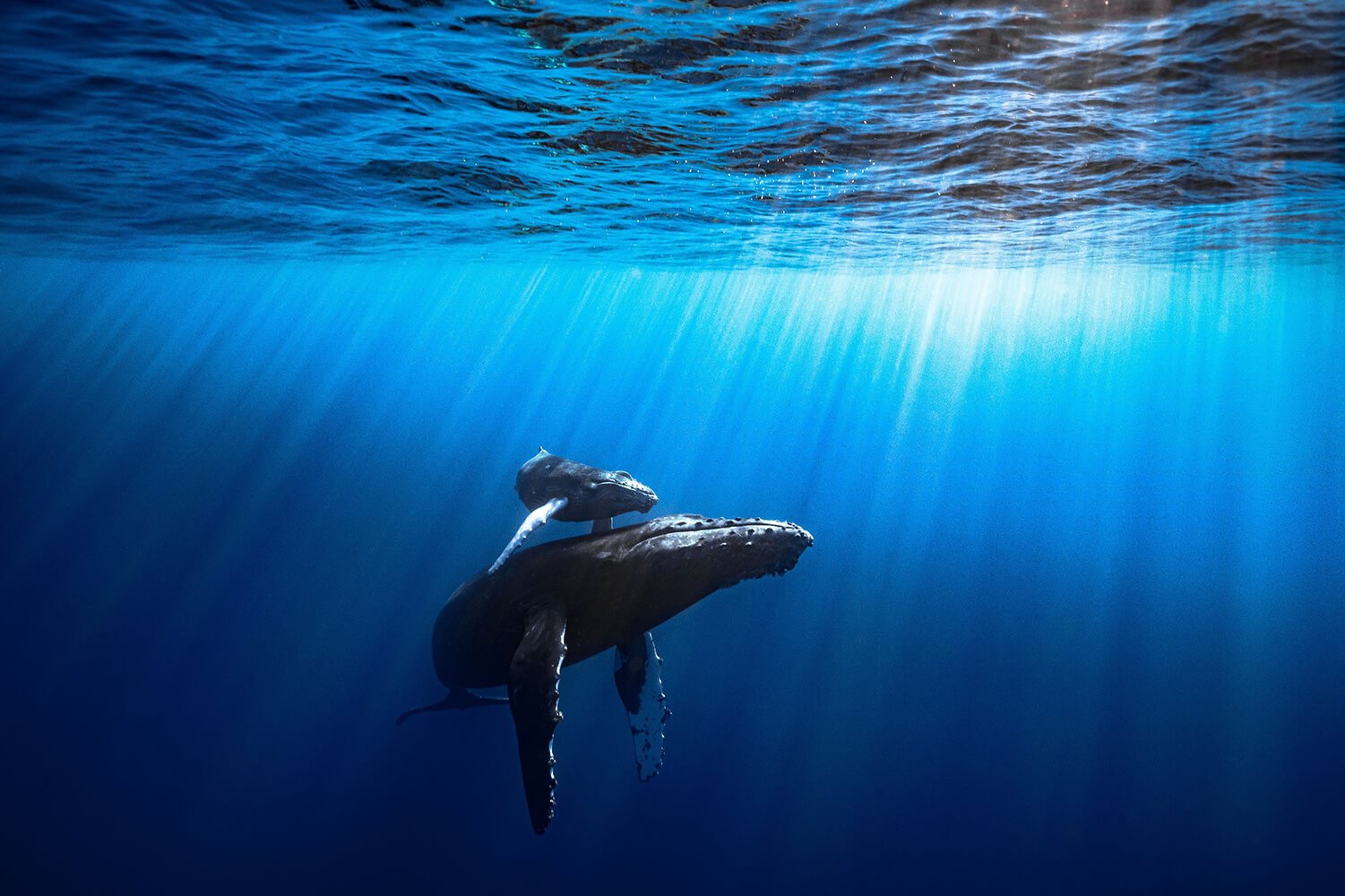
“A gorgeous underwater image taken with a crisp clarity, the rich blues of deep ocean water endless and empty other than for this privileged moment we witness between mother and child humpback whale. It’s a stunning moment, well observed by Rodrigo.” – Life Framer
Photographer statement – Of all the creatures of the entire planet, sharks are by far the most misunderstood. When a shark comes to mind for most people it brings fear, repulse and some times anger. Most marine creatures suffer the same way. Everything that lives underneath the thin line that separates the two worlds above and below see is like an alien to most people. I wish to show tranquility, connection, respect and love. Our goal, mine and that of the incredible animals that gave me each one of these pictures, is to show you that sharks, the ocean and all creatures that inhabit it deserves and need the love and respect of humanity.
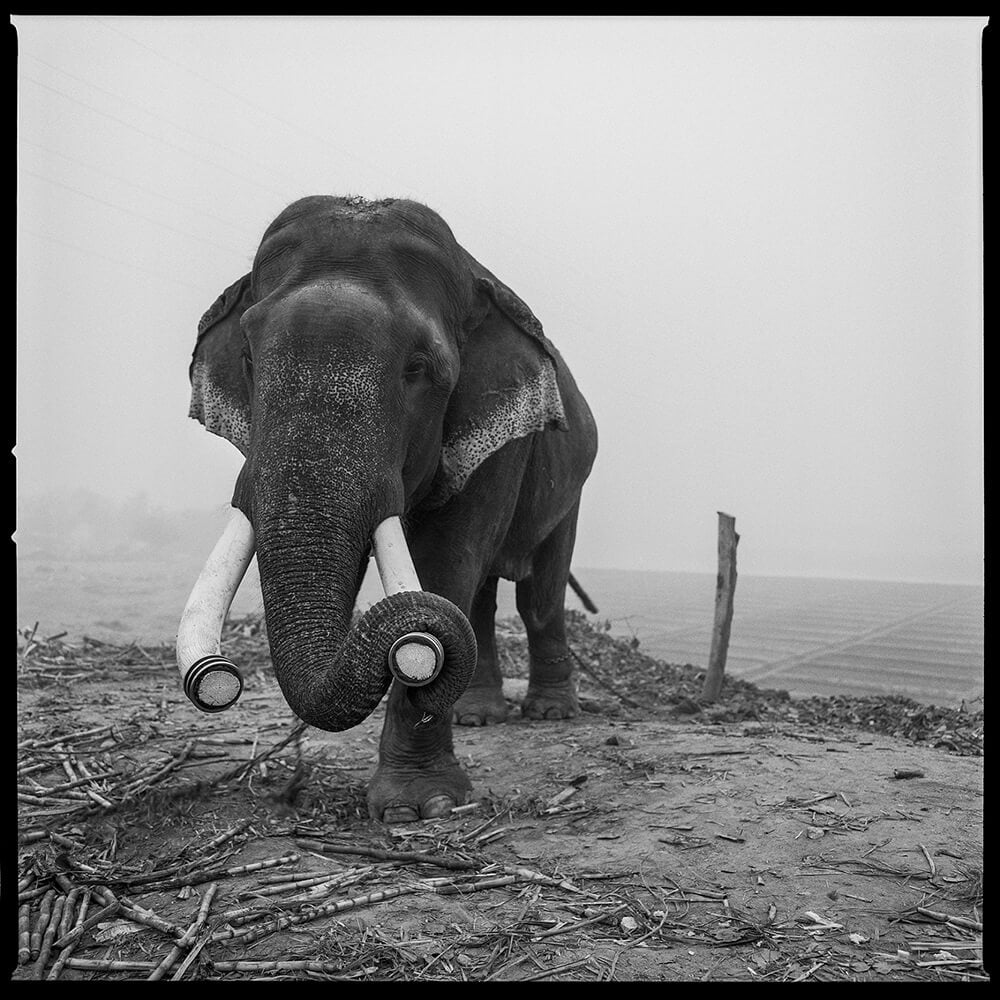
“Here Arun documents Hira, a 40-year-old elephant owned by an Indian family and hired out for religious festivities and advertising campaigns. Seen grasping one of its tusks, blunted we assume for the safety of people around, it evokes a sad reality, of an animal domesticated for human gain while its species becomes more endangered by the day. The sacred status of the elephant in Hindu religion provides an additional layer of complexity to the image, but photographed here in analog and black and white, against a barren, lifeless backdrop, Arun presents something nostalgic, as if the battle for its survival is already lost.” – Life Framer
Photographer statement – From the series The Elephant in the Room. This is the story of Hira, a 40 years old elephant born and raised in the heart of Delhi. He never saw a jungle in his life. Hira is used for religious festivities and event and in advertising, but mainly Hira is part of the family he belongs to. The biggest possible pet a family can have. He is both profitable for his owners and confers status on them, being the elephant a sacred animal to Hindu religion. His owners pay two mahouts (elephants keepers) to stay with the animal 24 hours, 7 days a week. Hira is literally and figuratively “the elephant in the room”. Elephants are at risk due to human activities. This is an emergency for the environment and shows dramatic contradictions in society.
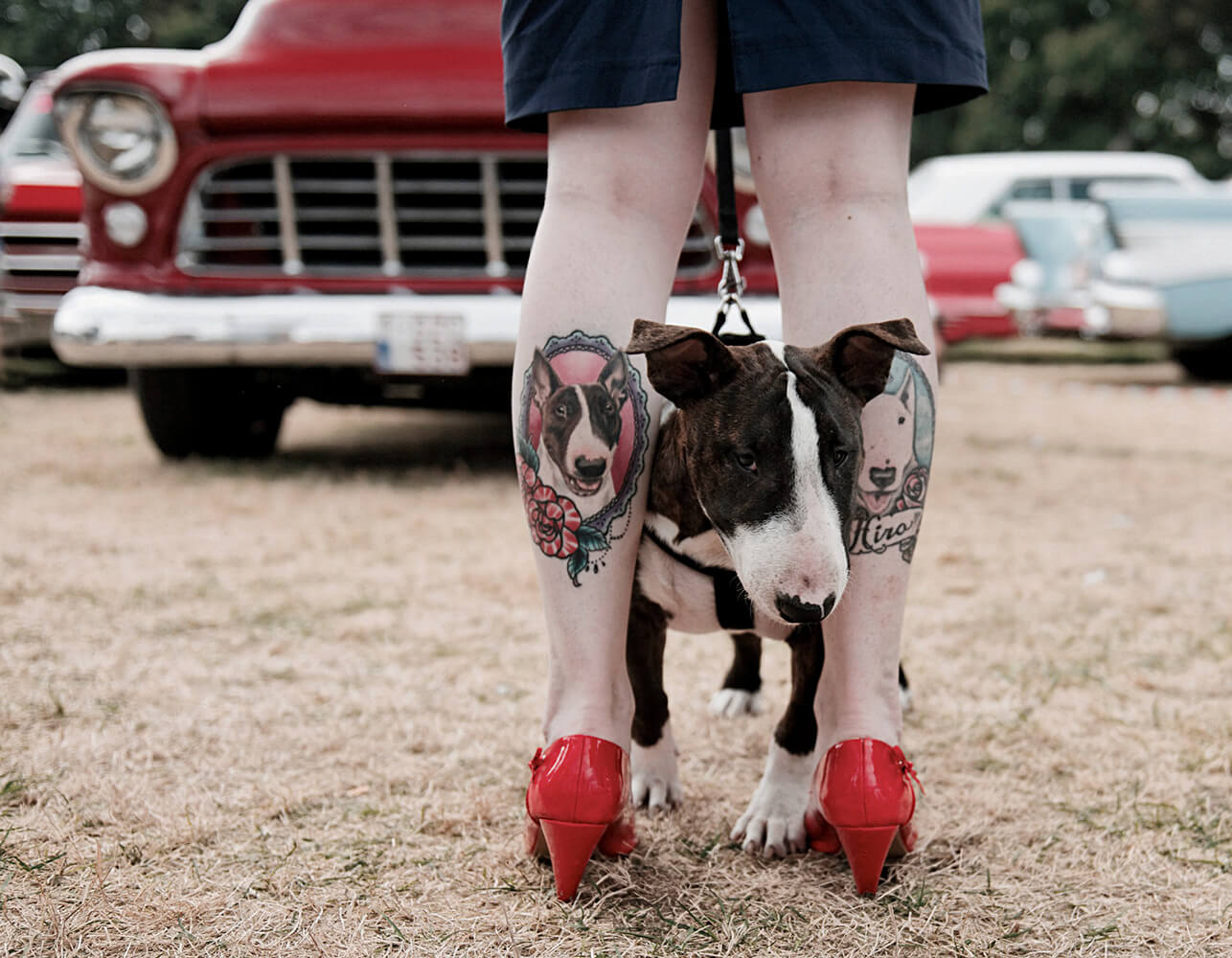
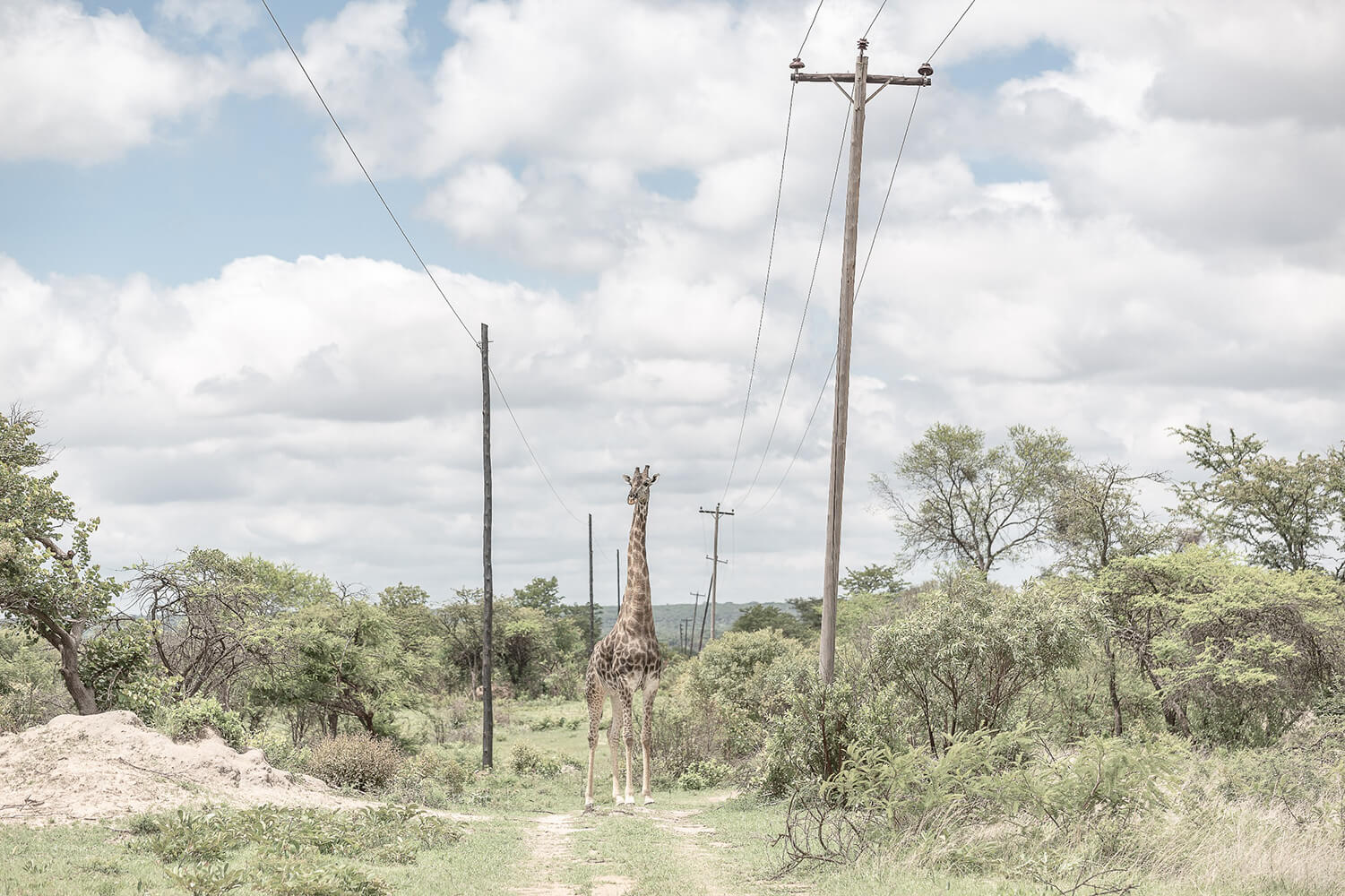
“Carefully framing this giraffe to mirror the tall pylons either side, this is a clever image that speaks to the endlessly intertwined relationship between the natural and the manmade world, and of our ever-growing footprint on the former.” – Life Framer
Photographer statement – From the series The Missing Link. The story of the broken bond between man and wildlife, a story about coexistence, conflicts, domination and extinction. The kingdom of wildlife is attacked, confined, caged and sold by humans, a kingdom made of infinite borders, where animals can only thrive by being active sources of income. In this fallen kingdom predators become tamed attractions, primates become strippers to get tips from tourists, giraffes are no longer the tallest, elephants become orphans and rhinos disappear to provide goods. Even lions, the glorious kings, become slaves.
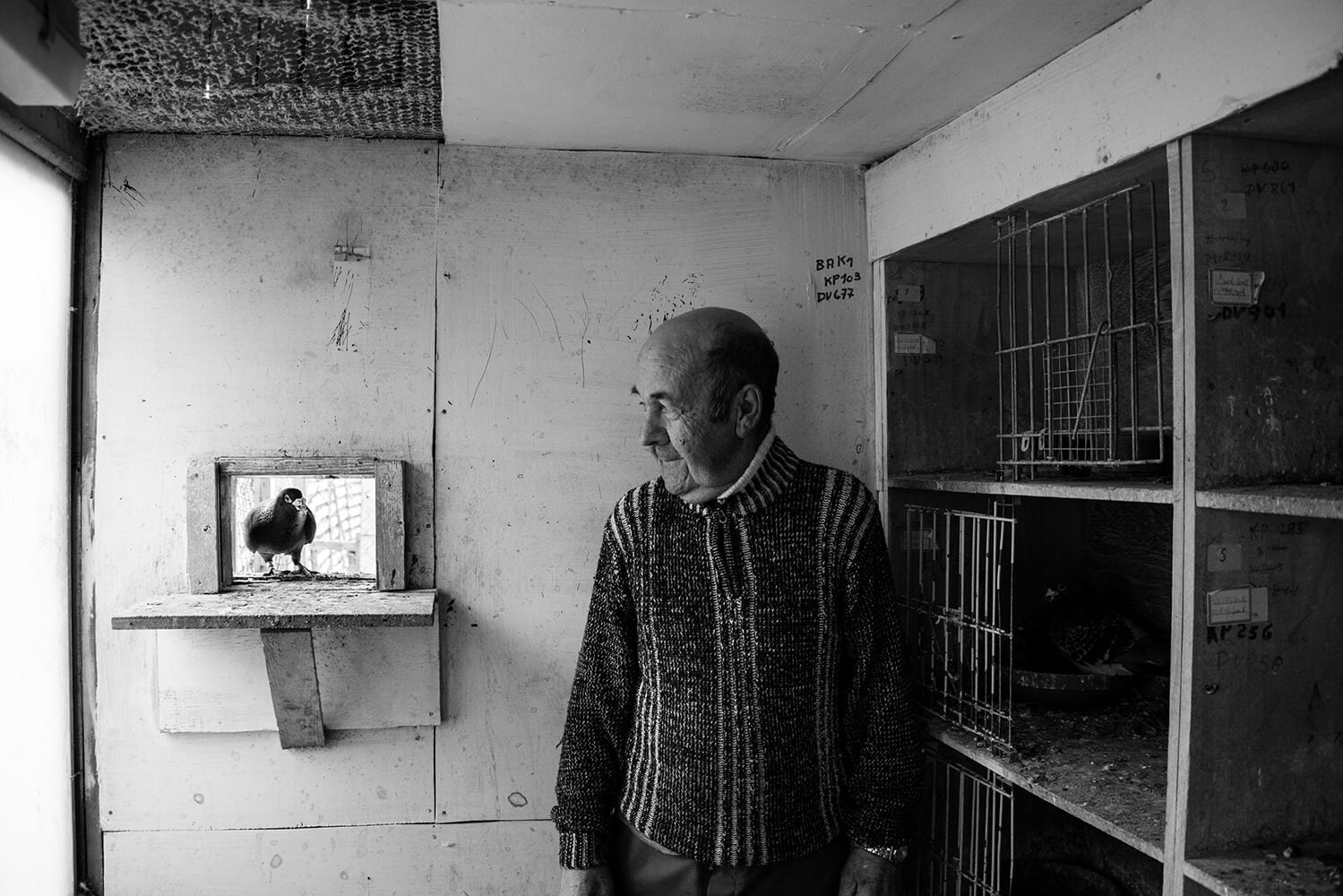
“Documenting a bird keeper and one of his birds, there’s a warm intimacy to this image, something almost comical about the way they interact with one another. Alaine paints a picture of a difficult life, the walls and cages slowly disintegrating around this man, but it ultimately speaks to a loving relationship between man and bird, of a nurturing interdependence based on care and earnt respect.” – Life Framer
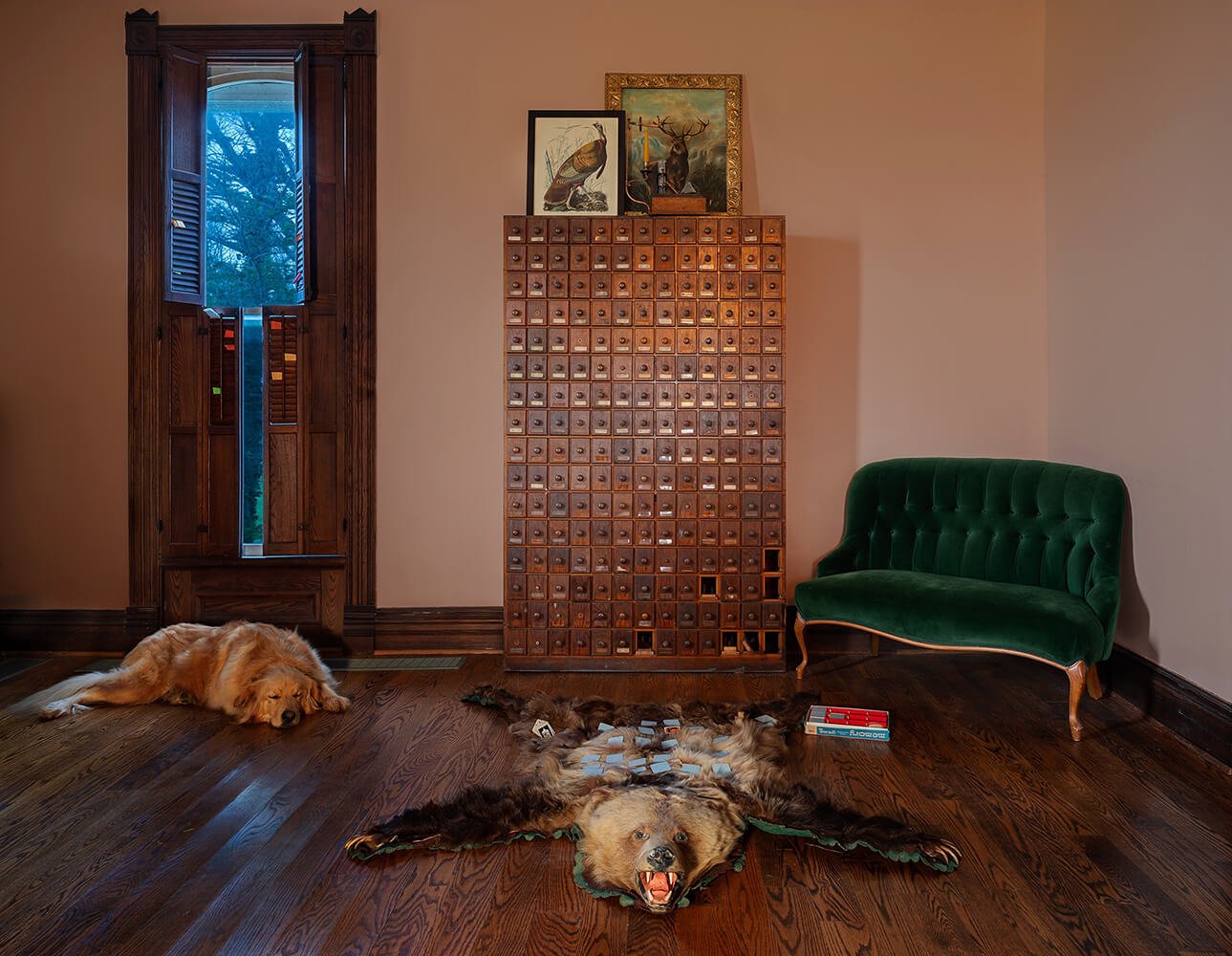
“In Sarah’s statement she talks of a fascination with the “tension between the wild and domesticated” and it’s an idea that’s brilliantly encapsulated in this image. From the image of a stag in the mountains, projecting ideas of strength and adventure; to the apothecary cabinet and its history of using animal meats, fats and skins to formulate medicines; through to bearskin rug and its notions of exoticism and status; to the Labrador asleep in the corner and humorously echoing the form of the rug; the scene is packed with information on how we venerate, domesticate use and abuse the animal kingdom. It’s a visual, and cerebral feast.” – Life Framer
Photographer statement – My photographs are examinations of the home and the many roles of animals within it. There is an uncanny and often humorous interplay between people’s decorative choices and the animal residents. I’m fascinated by this tension between the wild and domesticated. Pets have a unique status as animals with primal instincts and yet also as esteemed family members and creatures of comfort. In some images, pets co-exist seemingly unaware of static representations of their prey or wild ancestors. In others, they seem to claim ownership of their environment.
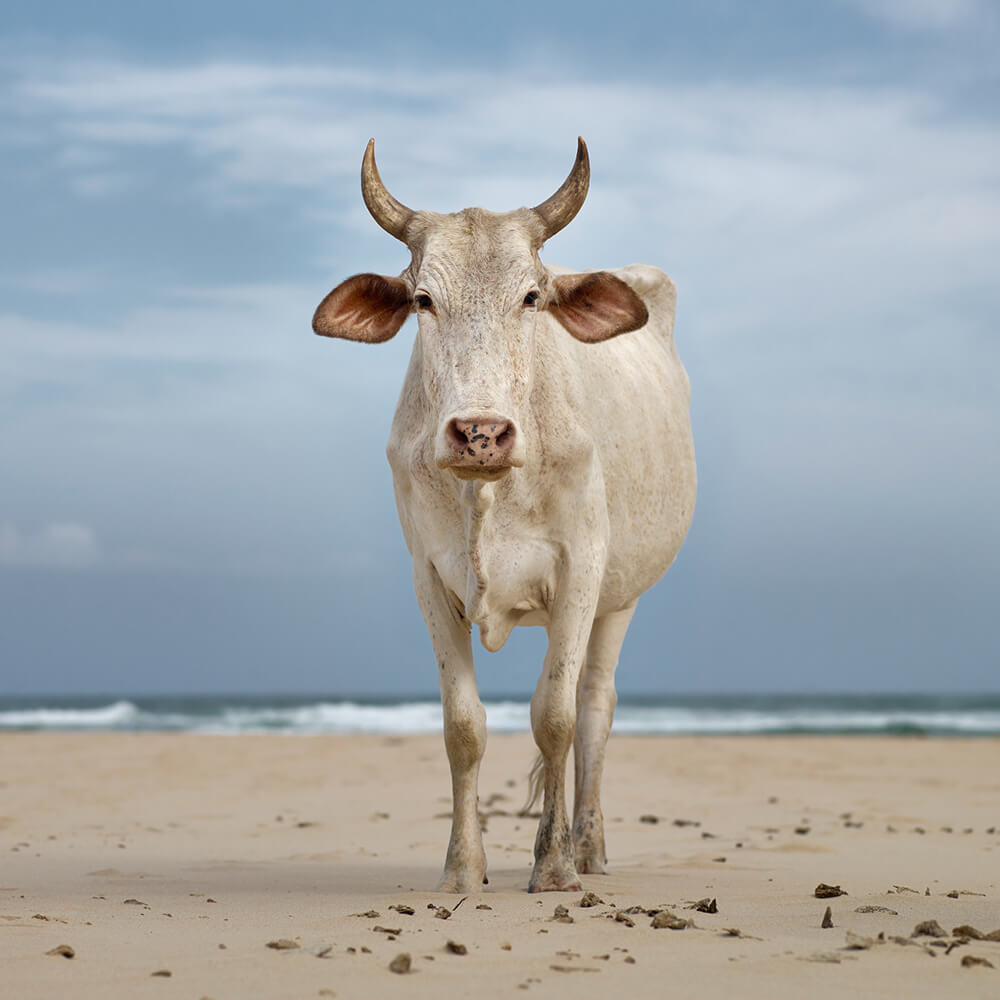
“This is a simple but powerful frame, the head-on composition and eye contact with the cow creating an intimate connection between viewer and animal. Calling the beaches of the Wild Coast of South Africa their home, it is strange to see cattle – originally imported by white Dutch settlers – live freely, taken out of the context of farmed assets that we are so used to seeing. The history of Nongqawuse, on which Daniel bases this project and summarizes in his statement, is a fascinating and troubling story of the relationship between people, animals and the landscape.” – Life Framer
Photographer statement – From the series The Bovine Prophecy. This series is set in the Wild Coast of South Africa, where cattle have left an indelible mark on the history of the region. It is here, after all, that Nongqawuse had her fated encounter with the spirits of her Xhosa ancestors in 1856. The importation of Friesland bulls from the Netherlands by white settlers, and the subsequent spread of bovine lung disease, lead to the decimation of local cattle. When Nongqawuse had a vision in which her ancestors promised retribution and restoration, it seemed as if some radical turnaround in the diminishing livelihood of the Xhosa people was possible. According to legend, the ancestors foretold that the dead of the Xhosa nation would rise from the sea, bringing with them new, uncontaminated cattle. This, the ancestors promised, would happen on the condition that the Xhosa people slaughter all their cattle and destroy their crops. After a year of systematic destruction, the Xhosa was left waiting on the shores of sea, hoping on a return that never came to pass. This event marked the demise of the precolonial Xhosa nation, with an estimated 40 000 people dying of starvation. As a result, the Wild Coast speaks of a complex relationship between human, animal and ocean.
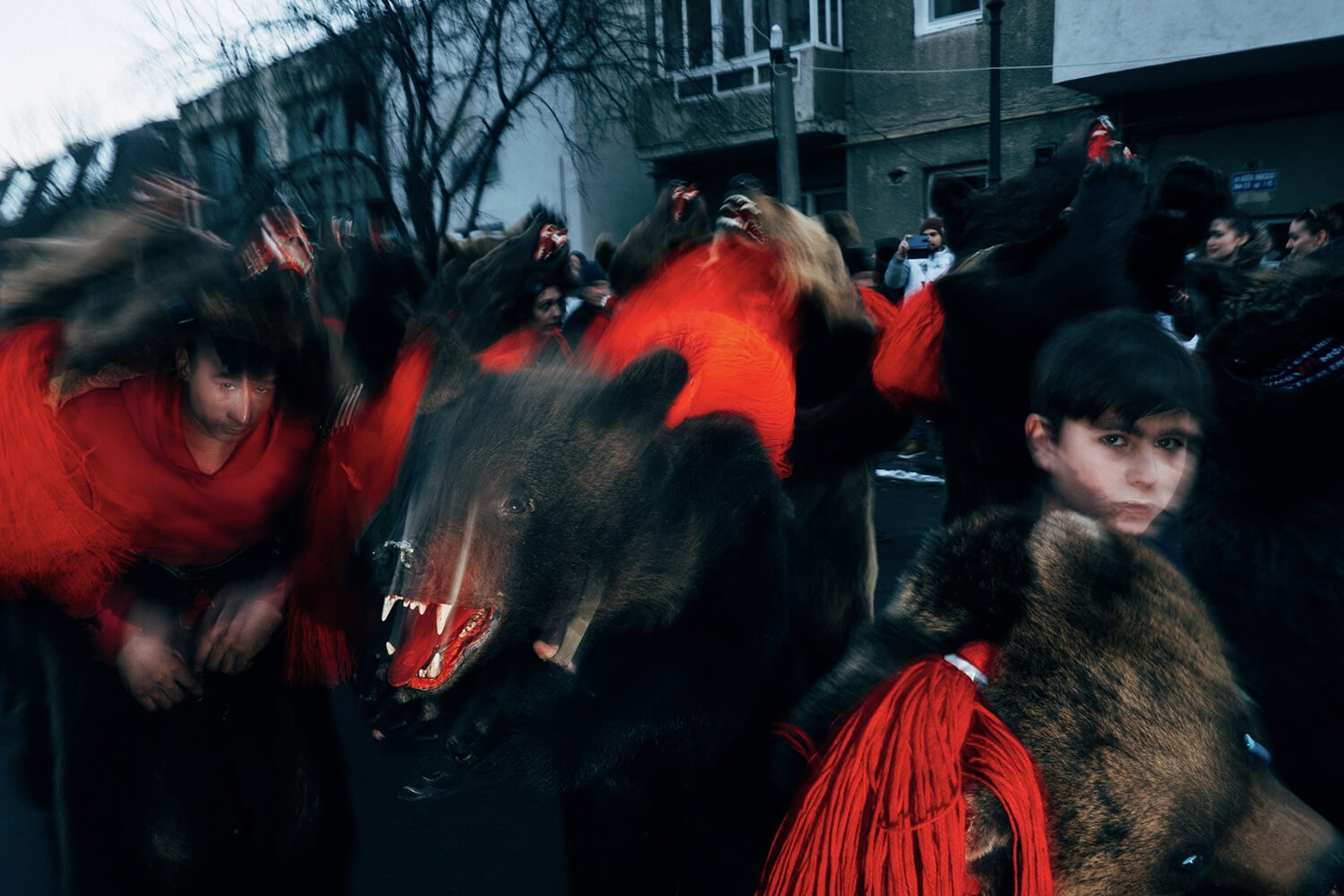
“With brilliantly executed lens blur, Max portrays the energy and motion of this street scene in Romania as revellers celebrate a historic new year’s eve tradition. Parading in bear costumes, they are ‘cut’ by a gypsy so that demons can escape, signalling rebirth and prosperity for the coming year. What makes the image work is the palette – deep reds of fabric and bear snarl against the muted fur and concrete – and how Max captures three sets of eyes, both human and animal; a brief moment of connection in the chaos. It’s a brilliant document of festivities that are at once a celebration of our deep connections with the animal world, and a reminder of crueller practices that have historically existed in the name of ritual and faith.” – Life Framer
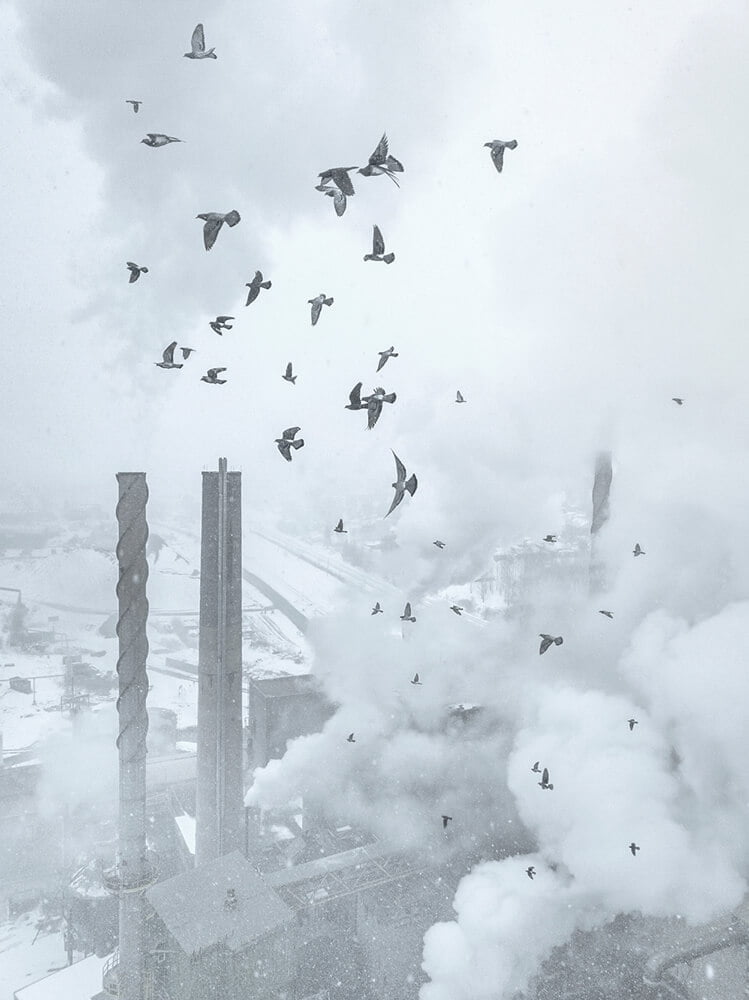
“With circling birds that draw the viewer through the frame to the billows of thick smoke emanating from a vast factory in a cold and barren landscape, this image is powerfully evocative – a sad, near-dystopian condemnation of the damage we wreck on the environment, captured, fittingly, with a drone’s-eye-view.” – Life Framer
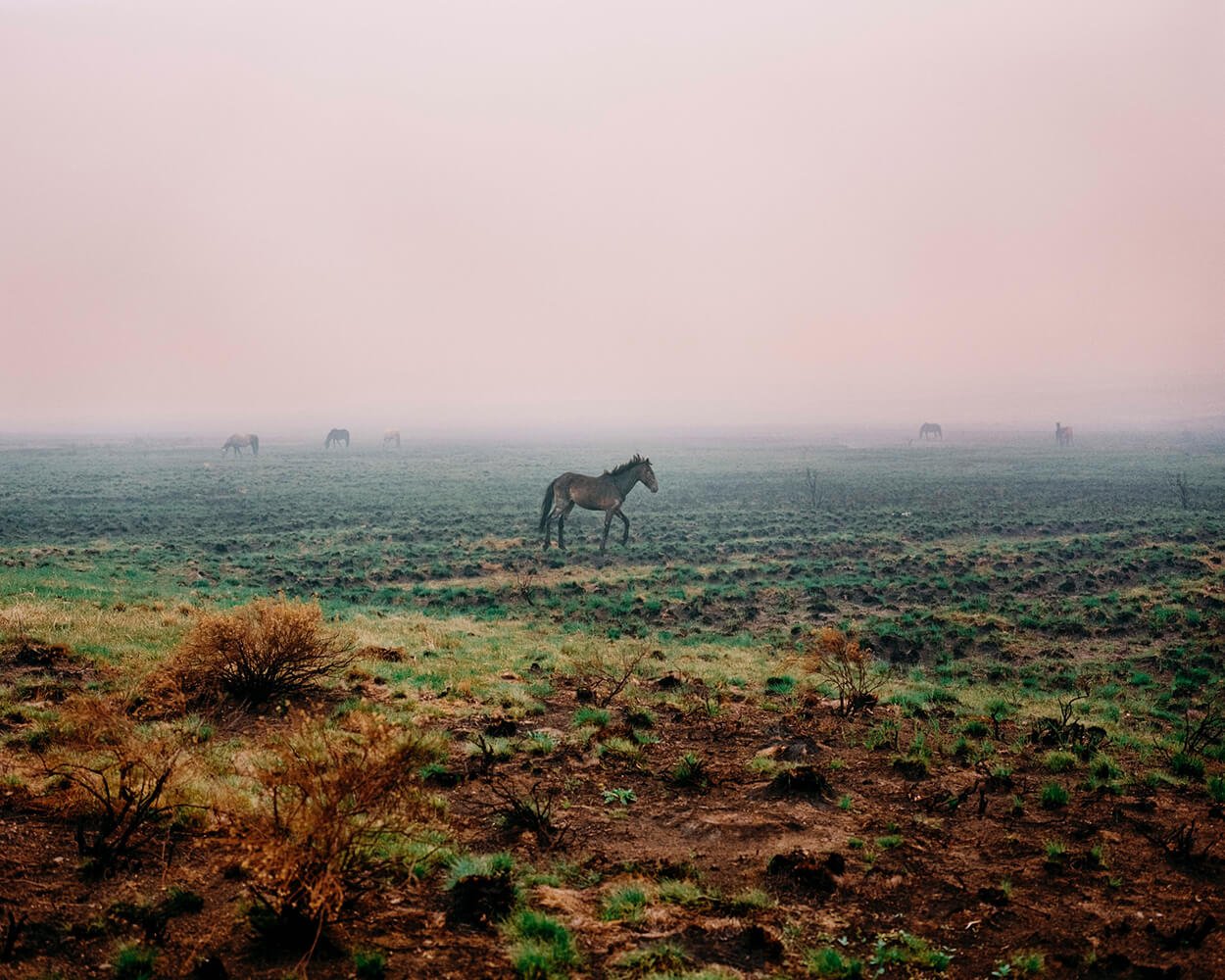
“Visually, this image is absolutely stunning – a gorgeous palette of ochre, green and pink, and the single horse – an Australian wild-roaming Snowy Mountain Brumby – framed centrally against a backdrop that fades to nothingness. There’s a peaceful serenity to it, a wildness and a pleasing lack of human influence. But Tom tells us in his statement that this is a land devastated by the bushfires of 2019 and early 2020 and with that information the image can be reinterpreted – the stumps of burnt trees are perhaps visible in the foreground, and the pink mist is perhaps symbolic of wildfire smoke. Documenting an animal so central to Australia’s identity, that represents freedom for some and is labelled as a pest by others, in a landscape ravaged by bushfires for which man is at least in part responsible, Tom raises complex questions around the environment and, as he eloquently puts it, this “time of ecological uncertainty.” – Life Framer
Photographer statement – From the series Do Brumbies Dream in Red? A project driven by research which explores anthropogenic changes in the Australian landscape through the use of conceptual documentary photography. The project considers the systems which position the Snowy Mountain brumby and the catastrophic 2019-2020 Australian bushfires within a time of ecological uncertainty. The Snowy Mountain brumby, an Australian feral wild-roaming horse, appears as a metonym throughout the project and acts as an entry point into both the human and nonhuman world.
Brumbies are a symbol of national consciousness. While they may be labelled as a ‘feral species’ and a threat to native ecosystems by environmentalists, they are also valued as an important part of Australia’s history as a symbol of national spirit. Brumbies represent wildness and the way we relate to, and attempt to control, nature. The project challenges the notion of clear and tidy boundaries in a time of ecological uncertainty. I seek to flatten the hierarchy between human and nonhuman life by allowing us to recognize ourselves within the violence we inflict on the natural world.
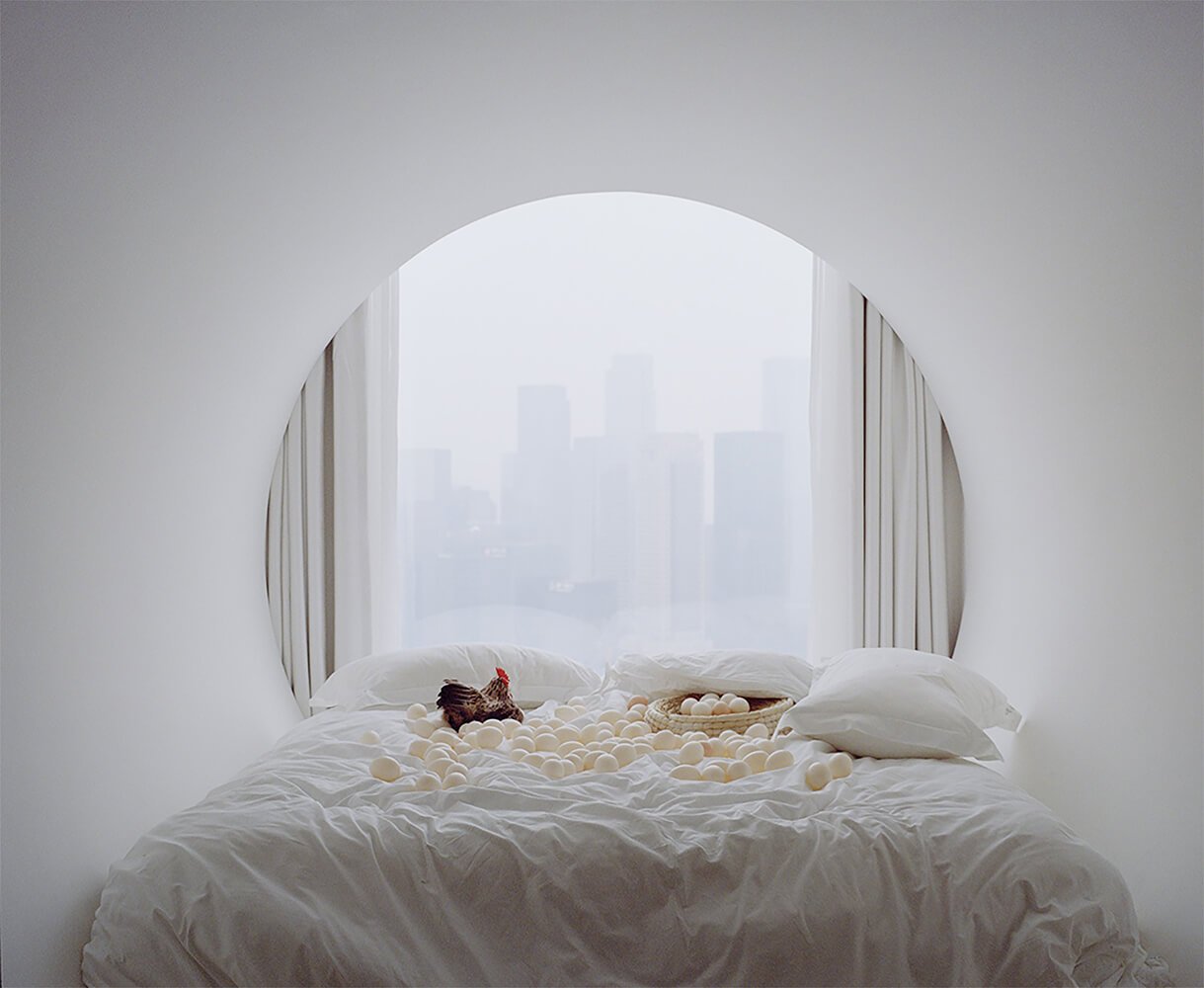
“There is a level ambiguity to this image – a sort of dreamlike surrealism. There are clearly themes of nurture and how animals can provide us with comfort (and sustenance), but also of our cities suffocating nature and animal life, the world left sterile and soulless as a result. It’s abstract and intriguing, and with the soft natural light, symmetrical composition and the use of ovals as a motif there’s a satisfying aesthetic too.” – Life Framer
